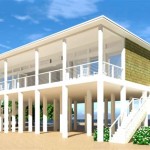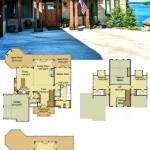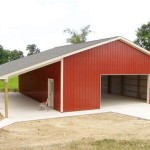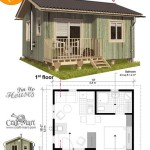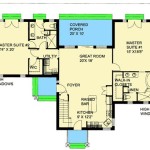Kitchen Floor Plans With Island: A Comprehensive Guide
The kitchen, traditionally considered the heart of the home, has evolved beyond a mere functional space for food preparation. Modern kitchen designs focus on creating an environment that fosters social interaction, enhances culinary creativity, and integrates seamlessly with the overall aesthetic of the residence. In this context, kitchen islands have emerged as a central element, offering both practical and aesthetic benefits. Effective kitchen floor plans incorporating islands require careful consideration of space, functionality, and design harmony.
A well-designed kitchen island can serve multiple purposes, from providing additional countertop space for food preparation and serving as an informal dining area to incorporating storage solutions and housing appliances. The ideal placement and size of the island are contingent on the dimensions of the kitchen, the layout of existing appliances and fixtures, and the homeowner's specific needs and lifestyle. This article provides a detailed exploration of various kitchen floor plans incorporating islands, focusing on key considerations for optimizing space, functionality, and design.
Optimizing Kitchen Space with Islands
One of the primary considerations when designing a kitchen with an island is optimizing the available space. The island should not impede the natural flow of movement within the kitchen, nor should it create unnecessary congestion. A crucial element in achieving this is adhering to appropriate clearances around the island. Industry recommendations typically suggest a minimum of 42 inches of clearance between the island and surrounding countertops, appliances, and walls. This clearance allows for comfortable passage and maneuverability, even when multiple individuals are working in the kitchen simultaneously.
The size of the kitchen itself dictates the feasibility of incorporating an island. In smaller kitchens, a full-sized island might overwhelm the space and hinder functionality. In such cases, a smaller, mobile island or a peninsula design might be more appropriate. These alternatives offer some of the benefits of an island, such as additional countertop space and storage, without sacrificing valuable floor space. Conversely, in larger kitchens, a generously sized island can serve as a focal point and enhance the overall design aesthetic.
The shape of the island can also contribute to space optimization. Rectangular islands are the most common, but L-shaped or curved islands can be utilized to maximize countertop space while softening the overall lines of the kitchen. Consider the existing layout of the kitchen, including the placement of doorways, windows, and appliances, when determining the shape and orientation of the island.
Beyond physical dimensions, consider visual space. A dark-colored or overly bulky island can make a kitchen feel smaller than it is. Using lighter colors, incorporating open shelving, or raising the island on legs can create a sense of airiness and improve the overall perception of space. Mirrored surfaces or reflective materials can also be used strategically to enhance the feeling of spaciousness.
Enhancing Functionality Through Island Design
The functionality of a kitchen island transcends its mere presence as a countertop extension. A well-designed island can significantly improve the efficiency and convenience of kitchen tasks. This requires careful consideration of the island's intended purpose and the incorporation of features that support those activities.
If the island is intended primarily for food preparation, incorporating a sink, a built-in cutting board, and ample storage for utensils and cookware can streamline the cooking process. A small prep sink separate from the main sink can be particularly useful in larger kitchens, allowing for efficient rinsing of vegetables and fruits without disrupting other kitchen activities. The placement of the sink should ideally be aligned with the primary work triangle formed by the refrigerator, stovetop, and main sink.
For islands designed for casual dining, incorporating an overhang for seating is essential. A standard countertop overhang of 12-15 inches provides adequate legroom for comfortable seating. Consider the height of the seating area when determining the countertop height. Standard countertop height is typically 36 inches, while bar-height seating requires a countertop height of 42 inches. The type of seating, such as stools or chairs, should also be chosen to complement the overall style of the kitchen.
Storage is another crucial aspect of island functionality. Incorporating drawers, cabinets, and open shelving can provide ample space for storing items ranging from cookware and pantry staples to cookbooks and serving dishes. Deep drawers are particularly useful for storing pots and pans, while pull-out shelves can improve access to items stored in lower cabinets. Consider incorporating specialized storage solutions, such as spice racks, utensil organizers, and wine racks, to maximize storage efficiency. Islands can also house appliances, such as microwaves, dishwashers, or wine refrigerators. Integrating appliances into the island can free up valuable countertop space and streamline the layout of the kitchen.
Electrical outlets are essential for powering small appliances and charging electronic devices. Incorporate multiple outlets along the island's perimeter, ensuring they are conveniently located and easily accessible. Consider installing outlets with USB ports for charging smartphones and tablets. In addition, consider the placement of lighting fixtures above the island. Pendant lights can provide task lighting for food preparation and create an inviting ambiance for dining.
Integrating Design Harmony and Island Aesthetics
While functionality is paramount, the aesthetic appeal of the kitchen island should not be overlooked. The island should complement the overall design style of the kitchen and contribute to a cohesive and visually appealing space. This involves careful consideration of materials, finishes, and design details.
The choice of materials for the island's countertop, cabinetry, and flooring significantly impacts its overall aesthetic. Countertop options range from natural stone, such as granite and marble, to engineered materials, such as quartz and solid surface. Each material offers different aesthetic qualities, durability, and maintenance requirements. Granite and marble provide a luxurious and timeless look, while quartz offers a more contemporary and low-maintenance option. Solid surface materials are highly durable and stain-resistant, making them a practical choice for busy kitchens.
Cabinetry styles should complement the overall design of the kitchen. Traditional kitchens might feature raised-panel cabinets with ornate hardware, while modern kitchens often incorporate sleek, flat-panel cabinets with minimalist hardware. The color of the cabinetry should also be carefully considered. White and neutral-colored cabinets create a bright and airy atmosphere, while darker-colored cabinets can add a touch of drama and sophistication.
The island's profile and detailing can also contribute to its aesthetic appeal. Adding decorative trim, such as crown molding or baseboards, can enhance the island's visual interest. Incorporating contrasting materials or finishes can create a focal point and add visual depth. For example, an island with a butcher block countertop and painted cabinetry can create a rustic and charming look. The island's lighting fixtures should also complement its overall design. Pendant lights with decorative shades can add a touch of elegance, while recessed lighting can provide discreet and functional illumination.
Consider the overall flow of the kitchen when designing the island. The island should not visually compete with other focal points in the kitchen, such as a statement range hood or a decorative backsplash. Instead, it should seamlessly integrate with the existing design elements and contribute to a harmonious and balanced space. Accessorizing the island with decorative items, such as bowls, vases, and cookbooks, can add a personal touch and enhance its aesthetic appeal.
The integration of design considerations, functional requirements, and spatial optimization is crucial for developing successful kitchen floor plans with islands. Thoughtful planning encompassing clearance zones, varied task functions, and complementary aesthetics will result in a kitchen that is both beautiful and highly functional.

Kitchen Floorplans 101 Marxent Layout Plans Best Design

Henry Kitchen Floor Plans Html

7 Kitchen Layout Ideas That Work

Kitchen Layout Small Floor Plans Design Layouts

Island Kitchens

Kitchen Floorplans 101 Marxent
:strip_icc()/RENOVCH7J-fb3cabc5a78647389a3de4eac2825432.jpg?strip=all)
5 Kitchen Floor Plans To Help You Take On A Remodel With Confidence

Kitchen Island Layout Ideas For Your Next Remodel

15x15 Kitchen Layout With Island Brilliant Floor Plans Wood Accent Bring Out Design Cabinet

Kitchen Island Plans S Ideas Tips From


